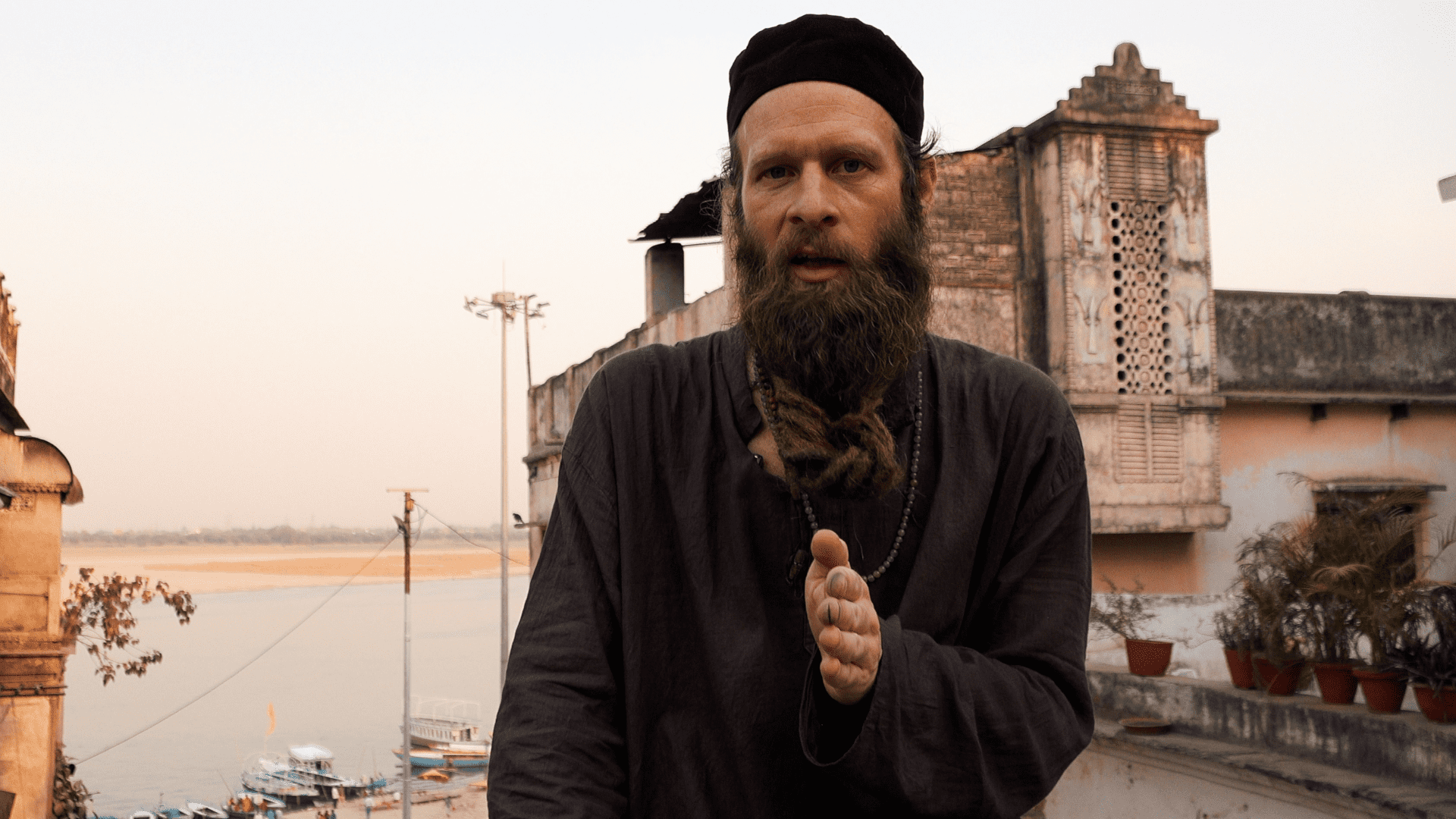
The Art of Raga
Varanasi/Benares, India. The beauty and depth of Indian music as explained by Sitar master Deobat Mishra and Wade Evans "Babaji".
Watch the videoThe Story
"The essence of Indian classical music is "freedom within discipline". The boundaries of a Raga are quite defined, but within those strict parameters there is absolute freedom for the artist, for the musician, to express themselves individually"
Wade Evans Babaji - Sitar master
I would like to take you on a journey to India to (re)discover a concept that forms the foundation of traditional and classical Indian music. I am pleased to present episode 3 of the series “The Musical Threads of the Silk Roads,” THE ART OF RAGA.
Upon my arrival in Benares (Varanasi), the cultural and spiritual capital of India, I had two desires in mind: to collaborate musically with a player of a legendary Indian music instrument (see the video clip “When Oud meets Sarod”) and to delve into the essence of the Raga. Having traveled to India several times, this nebulous concept was already familiar to me, but I had never really delved into it. Due to a lack of time? Or rather because, deep down, it made me dizzy?
Indeed, diving into the world of Raga is like starting at the foot of a mountain and tackling a subject as complex and fascinating as Western classical music!
To guide me on this path, I went to meet Pandit Shivnath Mishra, 80 years old, a former friend of Ravi Shankar and one of the greatest Sitar masters of our time, represented by his son Deobrat Mishra and his student Wade Evans “Babaji”.
From my interactions with these excellent musicians, I quickly realized that there are two irreducible musical worlds in our own: one that emphasizes harmony (the study of chords) and the other that focuses on melody (the study of modes). Classical music in Europe has, since the late 15th century, developed a sophisticated and effective theoretical framework around harmony, or the grammar of polyphony.
The Indian musical system, on the other hand, draws its roots from its Vedic origins, more than 4000 years ago according to Deobrat Mishra. It directs its exploration towards the organization of melody. As is the case with most so-called "Eastern" music, Indian music places significant importance on elements whose roles have been progressively diminished by polyphony (ornamentation, improvisation, rhythm, microtonality...).
The Raga forms the structure of this music, but not only that.
The diversity of the implications of this word is such that it can alone encapsulate the entirety of this art.
Productions & Credits
Album : The Musical Threads of the Silk Roads
Sitar : Pandit Shivnath Mishra, Deobrat Mishra & Wade Evans.
Oud: Ibantuta
Main camera & editing : Ibantuta
Field recording: Ibantuta
Studio recording: Patrick Fischer
Mixing: Patrick Fischer
Mastering: Jean-François Hustin
Label: homerecords.be
Video production: Ibantuta
www.ibantuta.com

